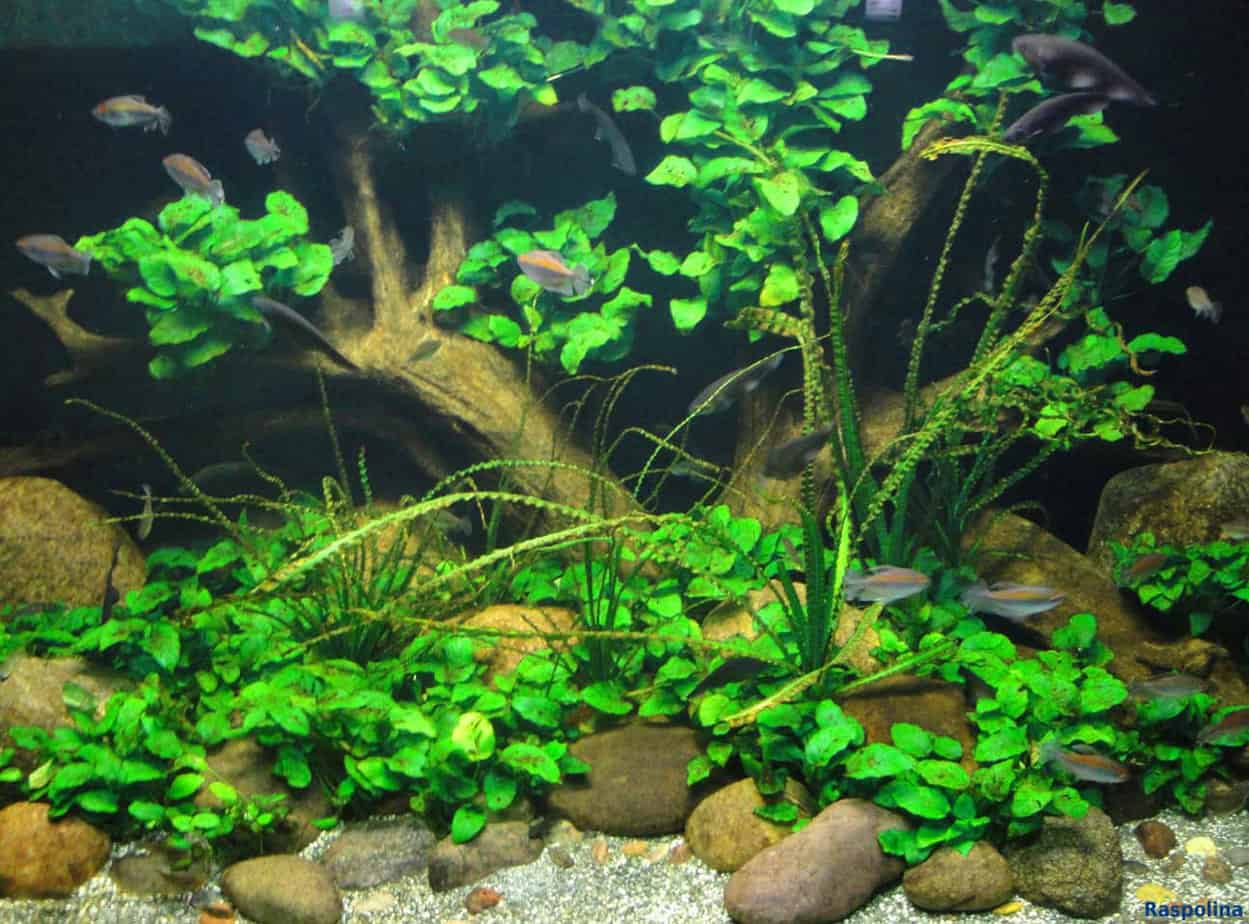There’s something special about owning an aquarium. It’s a living, breathing ecosystem that you get to nurture and care for. Plus, it’s a great way to relax after a long day. But one of the most important parts of keeping an aquarium is making sure the water is clean and healthy for your fish. And one of the best ways to do that is by regularly cleaning your aquarium rocks with vinegar.
In this guide, we will be examining why you should use vinegar to clean your aquarium rocks and a step-by-step guide to cleaning your aquarium rocks with vinegar.
How to clean aquarium rocks with vinegar?
Anyone that has ever owned an aquarium can tell you that keeping fish alive and well inside a tank can be a lot of work. Making sure you are staying on top of their cleaning and feeding schedules can be a tedious task, but is incredibly important in maintaining a healthy and happy ecosystem.
Vinegar is an essential multi-purpose item that every aquarium owner should consider incorporating into their tank maintenance and cleaning schedules. Before we begin explaining the process of cleaning your aquarium rocks with vinegar, there are some things to keep in mind.
- First, be sure to use a mild vinegar solution so as not to harm your fish.
A mild vinegar has been aged for a shorter period, and as a result, has a lower acidity level. Balsamic and rice vinegar are both examples of mild vinegar.
Some fish react to vinegar by swimming faster, while others may become more sluggish. In general, however, fish do not seem to be overly affected by trace amounts of vinegar. This is likely because the acidity of the vinegar is not high enough to cause any real harm to fish.
With that being said, high levels of acidity can be harmful to fish, as it can make it difficult for them to breathe and can also cause their skin and scales to become irritated. In extreme cases, high levels of acidity can even kill fish.
- Second, be sure to rinse the rocks thoroughly after cleaning them with vinegar to remove any residual vinegar that could harm your fish.
As mentioned earlier, acidity can potentially be very harmful to fish, and while smaller amounts don’t affect them as much, it’s always best to err on the side of caution and rinse rocks well before putting them back into the tank.
- Finally, be sure to allow the rocks to dry completely before putting them back in your aquarium.
If rocks are not completely dry before being placed back in the aquarium, they can introduce harmful bacteria and/or parasites into the water. This can lead to serious illness or even death for the fish. In addition, wet rocks can cause algae to grow more quickly in the aquarium.
A step-by-step guide to cleaning your aquarium rocks with vinegar
To clean your aquarium rocks, start by gathering your materials. For this cleaning task, you will need a small amount of milder vinegar, water, a bucket, and a brush.
- Start by removing the rocks from your aquarium. There are a few ways that you can remove rocks from your aquarium when cleaning. You can either use a net to scoop them out, or you can carefully remove them with your hands. If you have large rocks, you may need to use a hoe or other tool to help you remove them. Be careful not to break any of the rocks, as this can damage your aquarium.
- Place the rocks in a bucket or other container that is large enough to hold them all. There are a few different types of buckets that can be used when cleaning the rocks in your aquarium with vinegar. Some people prefer to use plastic buckets, while others prefer to use glass or metal buckets. It depends on your personal preference. If you are using a plastic bucket, make sure that it is food grade and that it has a tight-fitting lid. Glass or metal buckets can also be used, but make sure that they are clean and sanitized before using them.
- Fill the container with enough water to completely cover the rocks. Make sure everything is completely submerged so that no air bubbles are trapped under the rocks.
- Next, add vinegar to the water. The amount of vinegar that you add will depend on the size of your container and the number of rocks that you are cleaning. You will need to add enough vinegar to create a 1:1 ratio of vinegar to the water. For example, if you have a gallon of water in your container, you will need to add a gallon of vinegar. If you have a small container with only a few rocks, you may only need to add a cup or two of vinegar. A good rule of thumb to follow is to add 1 cup of vinegar for every gallon of water.
- Allow the rocks to soak in the vinegar solution for at least 15 minutes. This will give the vinegar time to loosen any dirt or debris that is clinging to the rocks.
- After 15 minutes, take a brush and scrub the rocks to remove any dirt or debris. The brush will help to remove any dirt or debris that is stuck on the rocks. If you are using a plastic bucket, you can use a nylon brush. If you are using a glass or metal bucket, you can use a steel wool pad. Be sure to scrub the rocks gently, so that you don’t damage them. It is important to remove all of the dirt and debris from the rocks before placing them back in the aquarium so that you do not introduce any harmful bacteria into the water.
- Place the rocks on a towel or other surface to allow them to dry completely. It is important to make sure that the rocks are completely dry before placing them back in the aquarium. Wet rocks can cause algae to grow more quickly in the aquarium. This part of the cleaning process generally takes the longest, as typically, it takes around 24 hours for rocks to fully dry.
- Once the rocks are dry, you can put them back in your aquarium. Make sure to rinse the rocks off with clean water before placing them back in the aquarium, so that you remove any vinegar residue. There is no particular way that you have to place the rocks in your aquarium, but many people like to arrange them in an aesthetically pleasing way. You can use your creativity to design an arrangement that you think looks nice. You can also look online for inspiration. There are many websites and forums dedicated to aquariums where people share photos of their aquariums and offer tips on how to create a beautiful setup. Feel free to mix it up and rearrange the rocks in any way you see fit to add some variety to the tank.
Why you should use vinegar
Vinegar is a natural disinfectant and cleaning solution that will help remove built-up algae, debris, and dirt from your aquarium rocks. Plus, it’s very inexpensive and easy to find.
There are a few reasons why vinegar is effective at cleaning aquarium rocks.
- First, vinegar is an acidic substance which can help to break down stubborn dirt and grime.
There are a few ways that acidic substances can break down dirt and grime. One way is by breaking down the bonds between the molecules of the dirt and grime. This can weaken the structure of the dirt and grime, making it easier to remove.
Another way is by reacting with water to create a film on the surface of the dirt and grime. This film can help to lift the dirt and grime off of the surface.
Finally, the acid can also help to break down the oils and fats that are often found in dirt and grime. Again, this can make it easier to remove stubborn dirt and grime from surfaces.
- Additionally, the vinegar’s acidity can help to kill off any harmful bacteria that may be present on the rocks.
Acidity kills bacteria by denaturing their proteins and disrupting their cell membranes. When the proteins are denatured, they can no longer function properly and the cells eventually die. The cell membranes are also disrupted, which prevents the cells from being able to regulate their internal environment. This leads to the death of the cells, and in the event of cleaning, makes substances much easier to remove.
- Finally, the vinegar’s bubbling action can help to loosen any dirt or grime that may be attached to the rocks, making them easier to clean.
The bubbling action in vinegar is caused by the presence of acetic acid. When acetic acid comes into contact with water, it produces bubbles of carbon dioxide gas. This gas is what gives vinegar its characteristic sour smell.
Image source: “Aquarium” by Raspolina von Suessholz is licensed under CC BY-ND 2.0.

